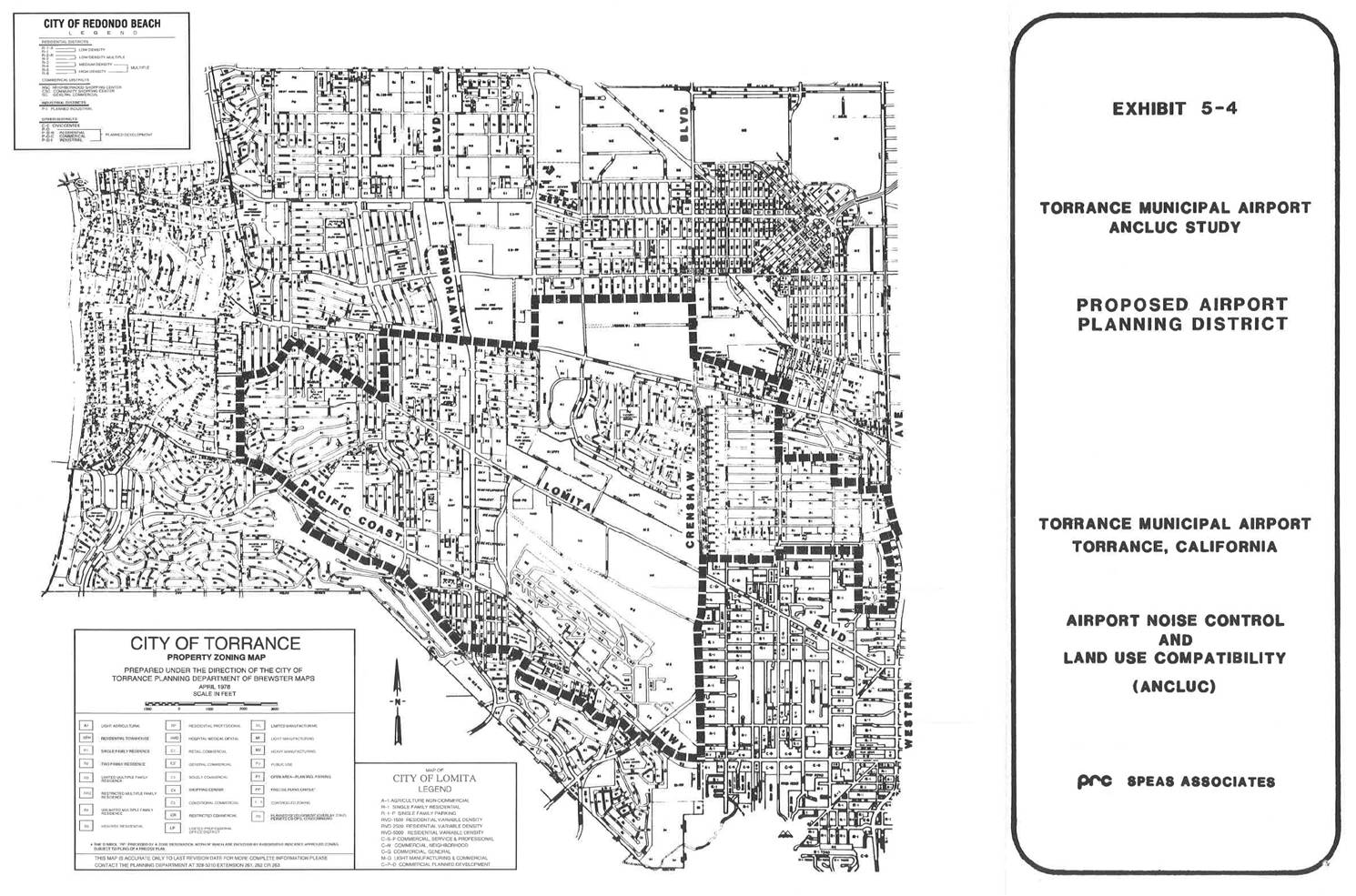Excerpts from the 1981 Report
Airport Noise Control and Land Use Compatibility
<
INTRODUCTION
The preparation of this document was financed in part through a planning grant from the Federal Aviation Administration
as provided under Section 13 of the Airport and Airway Development Act of 1970. The contents of this report reflect the
views of the professional staff of PRC Speas participating in this project. PRC Speas utilized, in some cases, airport
operations data and land use and zoning information supplied by the City of Torrance. The scope of the project and
procedural policies were determined jointly by PRC Speas and the City of Torrance who share the responsibility for the
facts and accuracy of the data presented in this report. The contents do not necessarily reflect the official views or
policy of the FAA. Acceptance of this report by the FAA does not in any way constitute a commitment on the part of the
United States to participate in any development depicted therein nor does it indicate that the proposed development is
environmentally acceptable in accordance with Public Laws 91-190, and/or 90-495.
5.5 Torrance Airport Planning District
|
Using the flight track corridors as the primary guideline, boundaries for a proposed Airport Planning District (APD)
have been defined. The boundaries generally follow existing street patterns. This APD is shown in Exhibit 5-4. The airport
related restrictions on land use within the APD may be accomplished through a policy of disclosure together with an
official review process for any proposed changes in land use.
Disclosure - This concept is basically a public information program designed to create an awareness in the community
of the nature of the activity at the airport and the resulting effects on the residents. Several avenues for this
disclosure process have been implemented at other airports and have proved helpful in lessening the conflicts between
the community and airport operations.
- Attachment of a Notice of Disclosure to Property Deeds. All parcels within the APD would have a notification of the proximity to airport operations with a brief explanation of the implications relative to land use in the area.
- Agreement for Disclosure from Local Realtors. Working through the local real estate board, it is possible to convey the information concerning airport noise and over flights to prospective home buyers.
- Road signs Delineating the APD. Installation of roadside signs identifying the area as an APD could carry a statement indicating the APD is subject to over flights and noise from operations at TOA.
- Publication of APD Boundaries in Local Newspapers and Maps.
|

|
Official Review Process - The objective is to have each request for a change in land use in the APD be subject to a
review by City Staff personnel who are knowledgeable concerning the effects of aircraft noise and over flights on various
land uses. Because of the relatively large area involved, this should not be implemented in such a way as to cause an
extensive review and possible environmental report for individual parcels. Instead, the applications would be checked
against the APD overlay and, if located in the designated area, forwarded to the appropriate reviewer, e.g., the
Environmental Quality Department. The applicant would then receive the appropriate notice of disclosure together with
recommendations for necessary building noise control procedures. The staff reviewer would make recommendations appropriate
for the exact location of the subject parcel within the overall APD.
The cities of Lomita and Redondo Beach might consider a similar APD along the flight corridors passing through each
community. A review of building permit applications would allow the staff reviewer in each city to alert the residents
to potential problems and recommend appropriate noise control measures.
You can read the entire report here.
